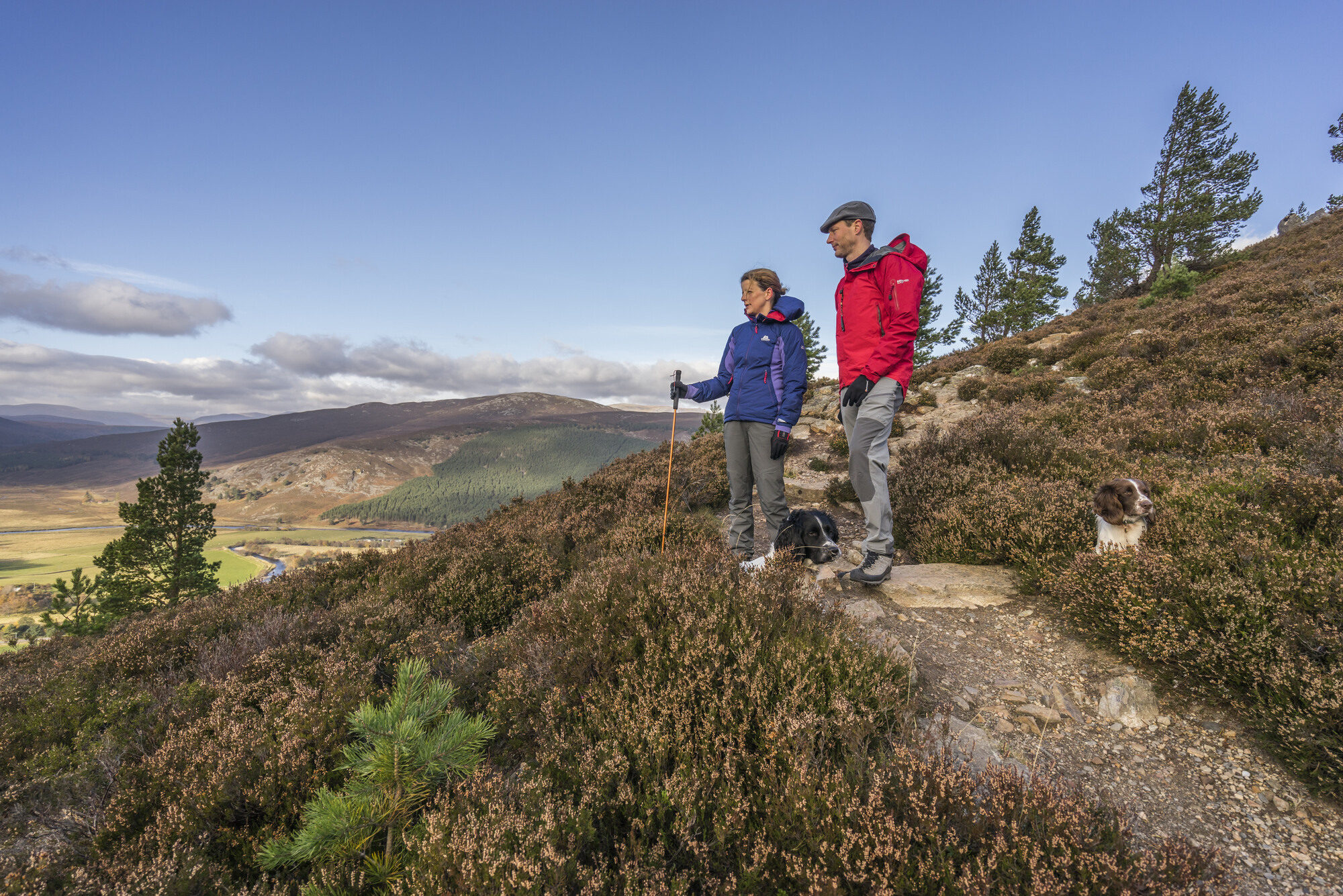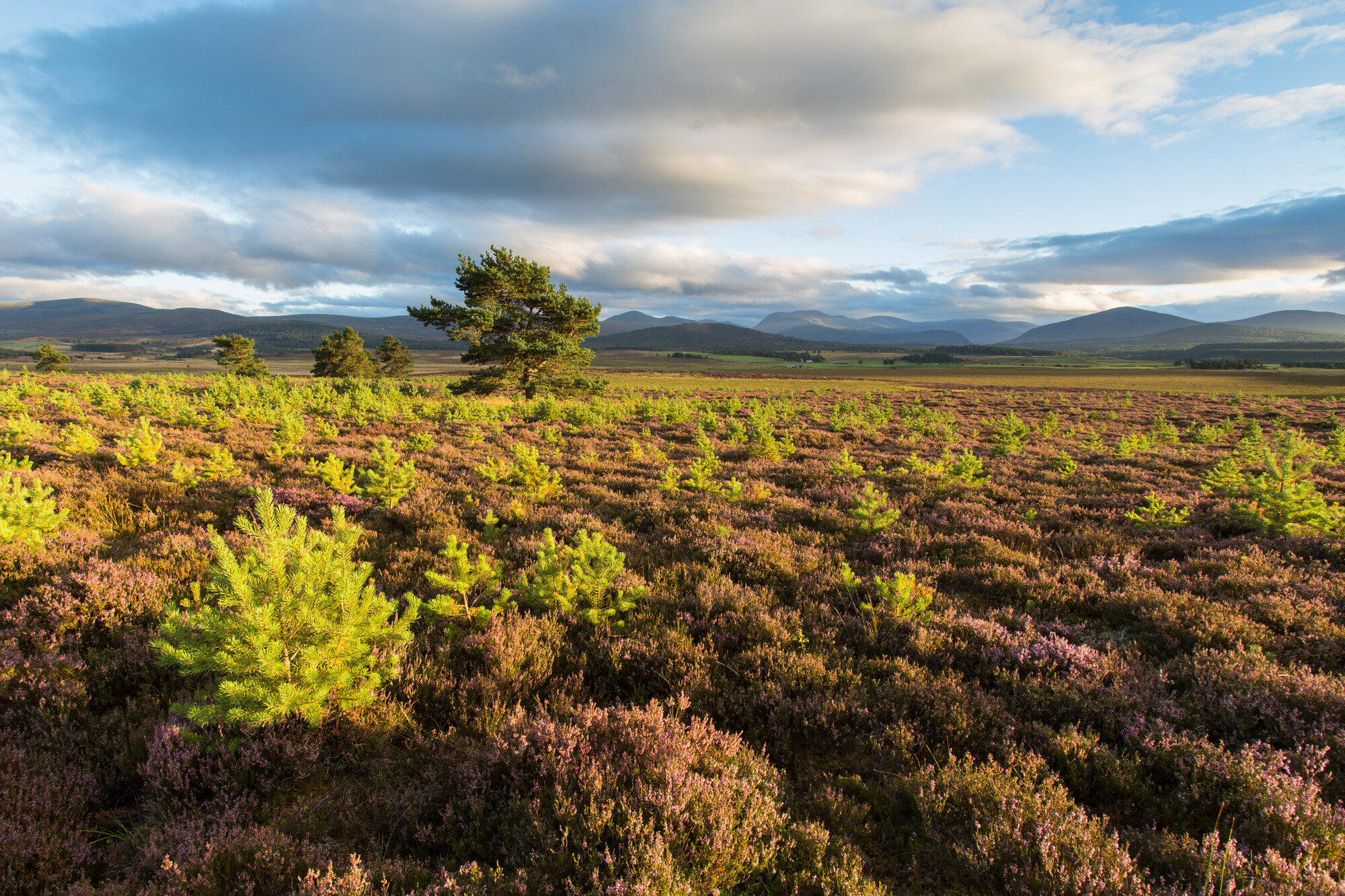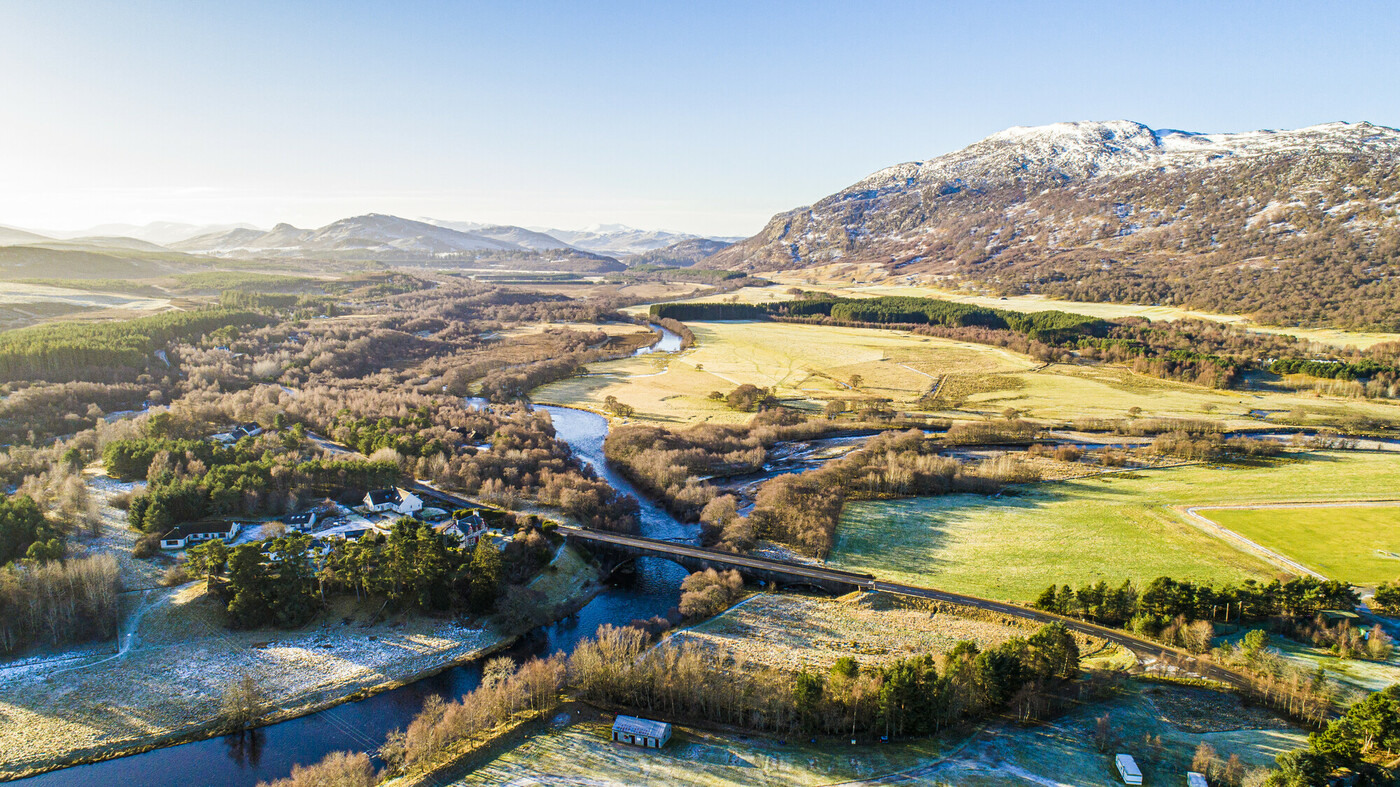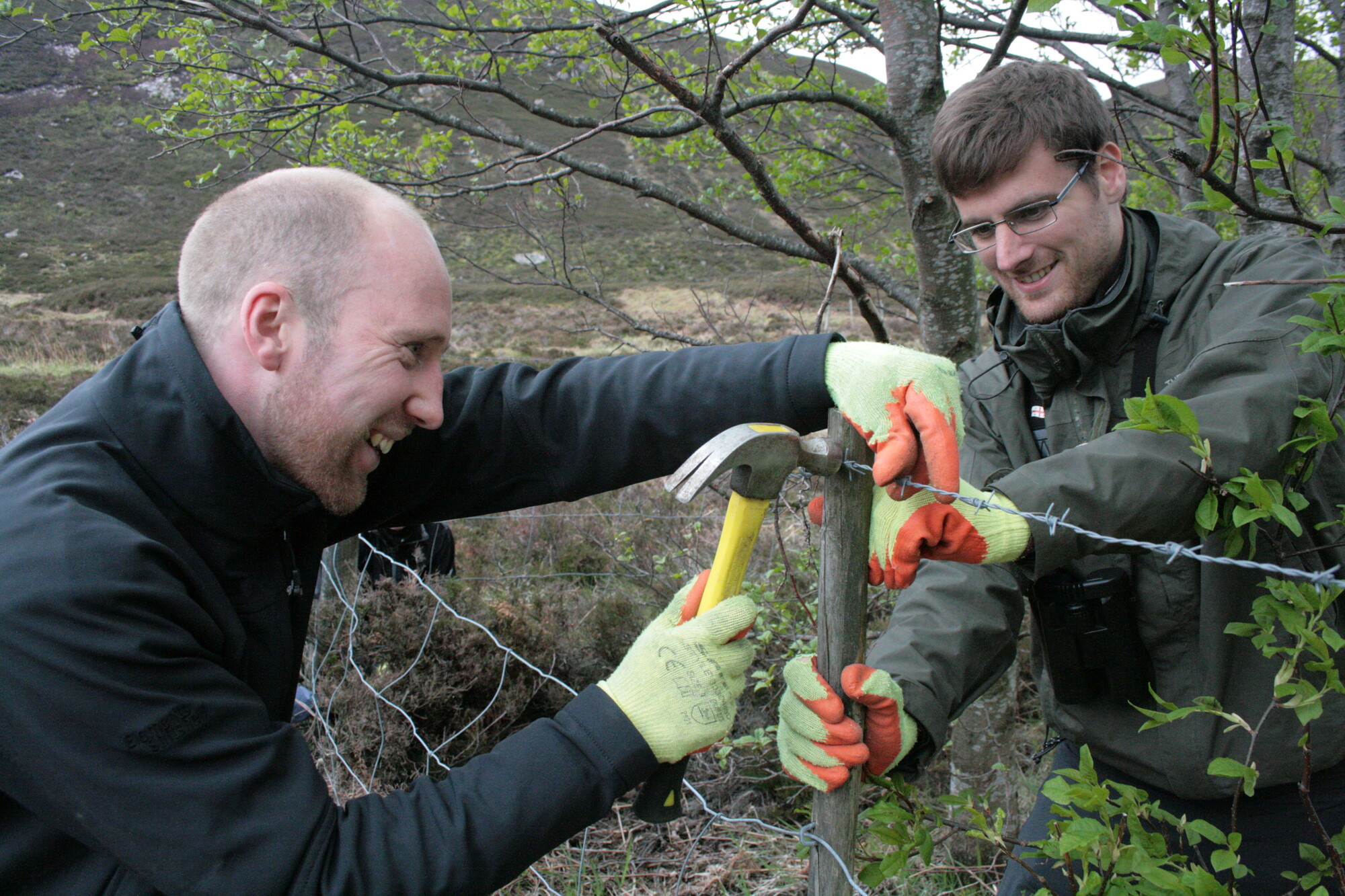Formal board meeting - paper 5 - agricultural land use and farming activity - 26 September 2025
Cairngorms National Park Authority Ughdarras Pàirc Nàiseanta a’ Mhonaidh Ruaidh Formal Board Paper 5 26 September 2025 Page 1 of 10
For discussion Title: Agricultural land use and farming activity Prepared by: Colin McClean, Head of Land Management and Malcolm Smith, Agricultural Adviser
Purpose This paper sets out an overview of farming and crofting in the National Park over the past 20 years, based on June census data. The information provides preliminary context on agriculture in the National Park, how systems have changed and some of the influences which have driven those changes. Subsequent, more detailed discussions on policy setting and strategic direction will take place as part of developing the next National Park Partnership Plan (NPPP).
Further discussion will be supported by an evaluation of the amount of public money invested in farming and crofting in the National Park and the outcomes towards which it is directed. This will be as part of a study of the environmental, social and economic value of farming and crofting in the National Park. This work is currently being commissioned in partnership with the Scotland’s Rural College (SRUC) and Loch Lomond and the Trossachs National Park Authority (LLTNPA) and will be presented to Board in due course.
Recommendations The Board is asked to: α) Note the overall picture of farming activity, trends and predictions for the future.
Strategic context
- The overarching objectives of agricultural policy are set out in the Agriculture and Rural Communities Act (2024) as: α) The adoption and use of sustainable and regenerative agricultural practices. b) The production of high-quality food. c) The promotion and support of agricultural practices that protect and improve animal health and welfare.
Cairngorms National Park Authority Ughdarras Pàirc Nàiseanta a’ Mhonaidh Ruaidh Formal Board Paper 5 26 September 2025 Page 2 of 10
d) The facilitation of on-farm nature restoration, climate mitigation and adaptation. e) Enabling rural communities to thrive. Rural payments drive much of the activity in the National Park, as they do across Scotland. Future rural payments, designed to support the delivery of the objectives in the Act, will be an evolution of those that currently exist.
Supporting farmers on taking an integrated approach to delivering a range of public benefits as per the objectives in the Act will form a key part of the next NPPP.
The objective in the current NPPP specifically relating to farming is to ‘Work with farms in the National Park to reduce their carbon footprint, conserve soil carbon, encourage sustainable production and deliver increased biodiversity on in-bye land.” Agricultural land also plays an important role in the delivery of nature networks and in species conservation.
Background
A large part of Scotland’s area is used for agriculture. The total Scottish agricultural area in 2024 was 5.16 million hectares, 66% of Scotland’s total land area. However, large areas of agricultural land are only lightly farmed. Hilly or mountainous areas, for example, often have limited growing potential more suitable for livestock than crops, and are mostly used for rough grazing.
The Basic Payment Scheme (BPS) provides area-based financial support to eligible farmers and crofters, acting as a safety net for all farm businesses by supplementing their main business income and promoting sustainable practices. BPS payments reflect the land’s quality and use for agricultural activities. Each land parcel is allocated a Payment Region. Region one includes better quality agricultural land that has been used for arable cropping, temporary grass and permanent grass. Regions two and three include different Less Favoured Areas (LFA) grazing categories, broadly rough grazing and hill ground respectively.
Farming and crofting are an important land use in the National Park and play a significant role in the landscape, economy and ecology of the Cairngorms. 79% of
Cairngorms National Park Authority Ughdarras Pàirc Nàiseanta a’ Mhonaidh Ruaidh Formal Board Paper 5 26 September 2025 Page 3 of 10
- the agricultural land in the National Park is region three (hill ground). Most of the region one land (crops and grass) is situated in the fertile flood plains of the Spey, the Don and the Dee, and there is also a significant amount up in the hills around Tomintoul and Glenlivet that is also more productive.
The current agricultural system is predominantly one of relatively low inputs with mixed livestock and arable cropping, although it’s difficult to generalise when looking at such a diverse area. There is extensive grazing with low livestock units per hectare. Cropping will involve similar inputs to most Scottish farms but will produce lower yields due to altitude and growing season. In parts of the National Park with access to better arable ground then the system tends towards the higher input / output business, where farmers will try to optimise weight gains to sell more kilos. These also tend to be to larger units with bigger herds of cattle. Conversely the larger flocks of sheep are usually hill sheep on a low input /output system.
The Park Authority does not administer, or have direct influence over, any agricultural support or payments scheme in the National Park. There is an existing network of agricultural knowledge exchange programmes (eg Monitor Farms), technical advice and research (eg Scotland’s Rural College and Moredun Institute), land agents administering rural payments applications (eg Agri-Environment Climate Scheme), education programmes (Royal Highland Educational Trust) and routes into policy discussions (National Farmers’ Union Scotland (NFUS), Crofting Commission and Scottish Land and Estates).
The Park Authority has employed an agricultural officer, or land management adviser with an agricultural focus, almost continuously since the inception of the National Park. To best add value to existing programmes of activity, and not duplicate the work of others, the role has focussed largely on facilitating better lines of communication and collaboration through a Farmers’ Forum; and supporting and maximising opportunities for biodiversity enhancement through projects such as Wetlands and Waders Initiatives, mob grazing and species rich grasslands. Activities have been supported with an annual operational plan budget, which in 2025⁄26 is £100,000.
Currently the post continues to fulfil these roles and also has a remit to support sustainable and successful farm businesses, the production of local, high-quality
Cairngorms National Park Authority Ughdarras Pàirc Nàiseanta a’ Mhonaidh Ruaidh Formal Board Paper 5 26 September 2025 Page 4 of 10
food and promote the positive impact of sustainable agriculture and its role in tackling the twin crises. The agriculture advisor also encourages and advises applicants to Park Authority funds, such as the Climate Adaptation Fund.
Since 2024, the Climate Adaptation Fund has provided grant funding totalling over £240,000 to farms and crofts for projects that support adaptation and mitigation to the impacts of climate change and lowering carbon emissions. These have included flood bank repairs and riparian planting, reducing fertiliser use, purchasing seed drills to reduce soil disturbance and watering livestock through solar powered water troughs.
The Park Authority provides additional support, over and above that which is available nationally, for land managers to manage and mitigate for the impacts of beavers. There is a dedicated team within the Park Authority and an operational budget. Part of this additional support includes a guarantee to provide grant assistance for any breach in the flood banks in the National Park proven to be caused by beaver burrowing where the flood bank was shown previously to be in good condition.
This specific offer of grant assistance to remediation of damaged flood bank is a conditional aspect of the translocation licence and will be in place until March
In 2026, following the establishment of any new or revised national agricultural schemes, the Park Authority will review its position to the end of the translocation licence in 2028. A further review will take place in 2028.
In 2024 the Park Authority established the Cairngorms Agricultural Advisory Group (CAAG). Membership is drawn from agencies and organisations, farmers and crofters across the National Park, and the Cairngorms Crofters and Farmers Community (CCFC). The group’s main functions are to act as a line of communication between the Park Authority and agricultural business; provide advice and guidance; support delivery of the NPPP; and share good practice.
The Cairngorms 2030 programme is trialling a range of farming practices and monitoring how they influence everything from carbon impacts to farm finances, stock performance to the farmer’s experiences. Methods include the use of diverse seed mixes that can help to improve soil and livestock and mob grazing where
Cairngorms National Park Authority Ughdarras Pàirc Nàiseanta a’ Mhonaidh Ruaidh Formal Board Paper 5 26 September 2025 Page 5 of 10
cattle are rotated around smaller patches of land for a shorter time, giving the soil a chance to rest and improving plant diversity.
June census data
The June census is coordinated by the RESAS (Rural and Environment Science and Analytical services) division of the Scottish Government. The annual census collates nation-wide data on land use, crop areas, livestock and the number of people working on agricultural landholdings. The data is used to help devise support payment systems and grant schemes.
Data collated for the National Park has been disaggregated from the national datasets according to parish boundaries. This presents challenges in assessing the percentage of a holding to include when the Park boundary crosses parish or holding boundaries. This has previously been done on the percentage of land area included within the Park boundary. When looking at payments to a particular holding then those could include payments for land outwith the Park boundary, as land gets amalgamated under the principal holding number.
Cairngorms National Park Authority Ughdarras Pàirc Nàiseanta a’ Mhonaidh Ruaidh Parish partially or wholly within Cairngorms National Park Formal Board Paper 5 26 September 2025 Page 6 of 10
All Scotland 2003 2023 Variation Variation Ha/No Ha/No Ha/No % Ha/No % Number of holdings 941 854 ‑87 ‑9.2% ‑5620 ‑11.2% Owned Rented 519 589 70 13.5% ‑496 ‑1.5% 422 265 ‑157 ‑37.2% ‑5124 ‑29.9% Land use, livestock and labour Total agricultural land (excl. common grazing) 562,973.08 509,257.19 ‑53716 ‑9.5% ‑187405 ‑3.4% Region 1 area (crops and grass) 63,615.44 55,087.11 ‑8528 ‑13.4% 34968 1.8% Region 2 area (rough grazing DA or better quality land) 3,592.59 546.41 ‑3046 ‑84.8% ‑2285 ‑3.7% Region 3 area (rough grazing SDA land) 469,040.02 402,370.29 ‑66670 ‑14.2% ‑476453 ‑14.7% Woodland 22,347.76 38,751.09 16403 73.4% 166372 70.3% Other land (rocks, roads, yards & buildings etc.) 4,377.28 12,502.29 8125 185.6% 89993 121.2% Common grazings 9,951.73 8,773.17 ‑1179 ‑11.8% ‑13589 ‑2.3% Total sheep 344,359 316,069 ‑28290 ‑8.2% ‑1395625 ‑17.4% Total cattle 49,804 35,656 ‑14148 ‑28.4% ‑255004 ‑13.2% Total full-time employees 615 684 69 11.2% ‑1373 ‑4.9% Total part-time employees 720 700 ‑20 ‑2.8% ‑154 ‑0.4% Total workforce 1,335 1,384 49 3.7% ‑1527 ‑2.2%
Cairngorms National Park Authority Ughdarras Pàirc Nàiseanta a’ Mhonaidh Ruaidh Formal Board Paper 5 26 September 2025 Page 7 of 10
Analysis of trends in farming activity
The number of holdings in the National Park has decreased by nearly 10%. This is likely due to amalgamation into larger units. There has been a decrease in rented farms, due to large estates taking farms back in hand. Long-term secure tenancies offer tenant farmers significant rights which may reduce estate flexibility.
Total agricultural land has reduced by nearly 10%. This is most likely a reflection of the expansion of settlements, roads, infrastructure and by woodland creation schemes. Different land types recorded by Rural Payment and Inspections Directorate (RPID), for example “other land” have been re-classified, resulting in some anomalies inn the data.
The significant reduction in the area of region two land is possibly due to reclassification by RPID or woodland schemes. Ground such as areas of bracken and scree is now considered differently and doesn’t feature in the census hectarage.
There has been a significant increase in woodland as a result of land managers’ response to the grant offer on some farmland. The 73.4% increase in the National Park is directly comparable with the national increase of 70.3%. The policy in the National Park is for ‘no wholesale conversion of enclosed, in-bye agricultural land to forestry’.
The number of sheep has decreased by over 8%. In Scotland as a whole, sheep have declined by around 16% so the decrease is much less in the National Park. The Cairngorms is well suited to sheep production and is the source of many of the store lambs which are fattened on lowland grasslands.
The number of cattle has reduced by nearly 30% in the last 20 years, and the decline within the National Park is twice that of the rest of Scotland. The Cairngorms is traditionally a suckler calf producing area. The loss of headage payments, suckler cow subsidy, combined with rising input costs for feed, fertiliser and fuel have all contributed to making the industry less viable in an area with a short growing season and challenging weather conditions. Labour shortages,
Cairngorms National Park Authority Ughdarras Pàirc Nàiseanta a’ Mhonaidh Ruaidh Formal Board Paper 5 26 September 2025 Page 8 of 10
regulations and market volatility leading to uncertain returns have all contributed to the decline of the national Scottish beef herd.
The agricultural workforce has marginally increased over the last 20 years. Some new entrants are coming into farming and current rising livestock prices may enable more. However, significant start-up costs will continue to be a barrier to many. Although agriculture is still male dominated, women now make up 40% of the workforce, often self-employed or part-time due to other jobs and responsibilities. As farms become larger and businesses consolidate and mechanise, it is likely that employment will decrease. Farm diversification, often into agri-tourism, has been a major income boost for a lot of businesses, and created new forms of paid employment for family members and staff.
The census data does not differentiate when collecting farm occupier data and combines occupiers and spouses. Figures below show agricultural occupiers and spouses in broad age classes as recorded in 2023. There is no data on farm employees but there is clearly an aging population of occupiers.
Under 41 41 to 54 55 to 64 Over 64 Total Occupier/Spouse Total working occupiers 23 70 91 123 451
Future changes, challenges and opportunities
Funding support systems to agriculture are likely to change in future to reflect the opportunities for sustainable farm businesses producing high quality food to also make a significant contribution to Scotland’s efforts in tackling the twin crises and providing adaptation and resilience to the impacts of climate change.
The Basic Payment Scheme (BPS) provides area-based financial support to eligible farmers and crofters, acting as a safety net for all farm businesses by supplementing their main business income and promoting sustainable practices. It is thought BPS is unlikely to change significantly in the next five years. However, the Greening measures which farms must undertake to qualify for BPS are likely to change. New Greening measures will apply to all arable land and the definition of arable land will include temporary grassland. The inclusion of temporary grassland
Cairngorms National Park Authority Ughdarras Pàirc Nàiseanta a’ Mhonaidh Ruaidh Formal Board Paper 5 26 September 2025 Page 9 of 10
means virtually all farms in the Cairngorms which wish to claim BPS will have to comply with new Greening measures.
Every farm business which claims BPS will need to produce a Whole Farm Plan (WFP). A WFP is a series of measures designed to help businesses become more efficient, to reduce costs, cut emissions and improve biodiversity. There are five components to the WFP. To claim BPS, farm businesses will have to complete two of these components by May 2026. The components are an animal health and welfare plan, a biodiversity audit, a carbon audit, an integrated pest management plan and a soil analysis.
Farmers are likely to continue to face environmental challenges linked to climate change. These will include increased frequency of extreme weather events like drought and floods. Scottish Environment Protection Agency (SEPA) have recorded a greater frequency and an increase in energy of the flash floods affecting our rivers. This puts enormous pressure on floodbanks, to the point of breaching. Climate predictions are that this will happen with greater regularity.
Scotland is currently experiencing record water scarcity with 17 catchments at Significant, the highest number since the current version of the National Water Scarcity Plan was introduced. This stands out for the scale and duration of low rivers flows. In the Lower Spey, for example, the 2025 season has seen the highest number of low-flow days in a 70-year record.
Reductions in cattle grazing could result in increased vegetation growth, changes in biodiversity and less organic matter being added to soils, which reduces carbon sequestration. No-fence collars have radically changed the way cattle can be managed. Many estates, farms and crofts are using collars to (re)introduce cattle grazing in woodland, on hill ground and unimproved land, increasing heterogeneity in field layer and increasing biodiversity.
Farmers remain vulnerable to market volatility beyond their control. Currently livestock prices are extremely good, but barley prices are low, and input costs like fertiliser remain high. Using direct drills to minimise cultivation, maximising use of farmyard manure and recycled fertiliser sources, and targeting spray weeds are all ways that farmers are cutting costs and reducing their carbon footprint for arable
Cairngorms National Park Authority Ughdarras Pàirc Nàiseanta a’ Mhonaidh Ruaidh Formal Board Paper 5 26 September 2025 Page 10 of 10
crops. Rotational grazing, soil mapping and alternative overwintering systems are ways of taking cost out of livestock production. The Park Authority is supporting innovation and knowledge exchange through the Climate Adaptation Fund, operational plan activities and the Cairngorms 2030 Future Farming programme.
Colin McClean colinmclean@cairngorms.co.uk 09 September 2025
Malcolm Smith malcolmsmith@cairngorms.co.uk 09 September 2025




